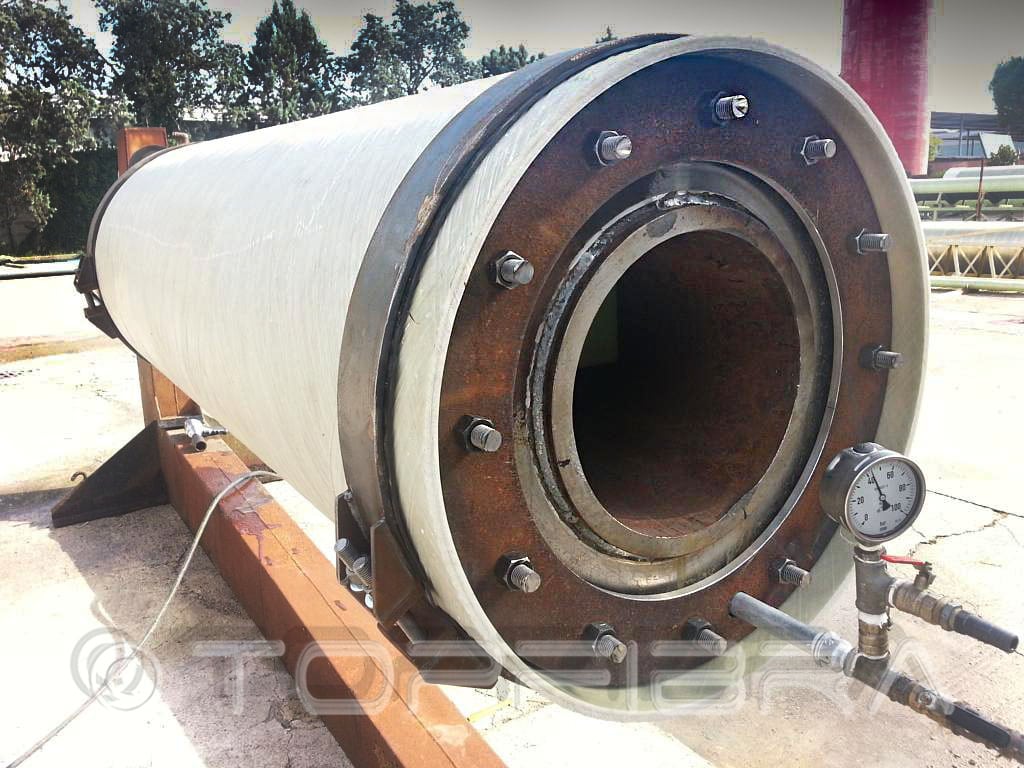In order to have a good understanding of how the GRP pipes behave, we must understand their viscoelastic behavior.
The relationship between the stress and the strain, i.e. the structural response of the plastics, varies from viscous to elastic. This means, that most of the structural plastics and reinforced plastics display a structural response, which is intermediate between the viscous and elastic states.
In short, they are viscoelastic materials.
The type of the plastic compound, stress, strain, time, temperature, and environment, all play a significant role in determining whether the response is predominantly viscous, elastic, or viscoelastic. However …
I will continue with the explanation of the viscoelastic materials. But before, it is important that we look at the terms normally used to characterize the viscoelastic behavior of plastics. Including the idealized components of the viscoelastic models, so you can have a complete understanding of them. Since these expressions will be used frequently in my future articles, it is crucial that you know them.
Viscoelastic behavior of the plastics
- Elastic response: stress is proportional to strain and independent of time. The response to stress is instantaneous. There is no permanent or irrecoverable deformation; all energy used to deform the spring is accumulated and fully recoverable.
- Viscous response: stress is proportional to the strain rate, making behavior time-dependent. The recovery is nil when the stress is removed. Energy to deform the dash-pot is completely dissipated during the deformation process.
- Creep is the time-dependent increase in the strain of a viscous or viscoelastic material under sustained stress. The time-dependent deformation is partially recoverable with time after the release of the stress.
- Relaxation is the time-dependent decay of stress of a viscoelastic material under sustained strain. Some of the deformations is recoverable with time after the release of the sustained strain. Unless the imposed initial strain is above the yield point, the cross-section remains fairly close to the original throughout the test. This differs from the creep behavior, as noted above.
- Recovery is the extent to which an element returns to its original configuration after the release of the stress or strain.
- Viscoelastic modulus: is a term, which defines the ratio between stress and strain after any duration of stress or strain. This ratio is frequently referred to as the “apparent modulus”. The “viscoelastic modulus” terminology, however, appears to be a more descriptive and appropriate companion to the term “elastic modulus” which is well-known to any Structural Designer.
More on the viscoelastic behavior of the plastics
- Linear viscoelastic response refers to the viscoelastic response when stress and strain are related by a single modulus, which depends only on the duration of the applied stress and strain at a given temperature. This differs from the non-linear viscoelastic response when the modulus depends on the value and the duration of the stress or strain. Viscoelastic stiffness response has traditionally been expressed in terms related to the manner of loading. The “time-dependent apparent modulus” or “the ratio of the (decaying) stress to the (constant) strain”, imposed during the relaxation experiments, is defined as the “relaxation modulus”. If the test is performed in creep, the “creep compliance” or the “ratio of (increasing) strain to applied stress” is used to define the response. This observation is extremely useful for the study of non-linear viscoelastic behavior which occurs at the stresses and temperatures above the range of interest in structural engineering. That can be shown for small strains at temperatures within the useful range. Thus, provided that one knows the range over which this assumption can be made, a single modulus can be used to describe the time-dependent stiffness response under both, the creep and the relaxation loading conditions.
Creep and Relaxation
All GRP pipes exhibit both, creep and relaxation. Various tests are performed to ascertain and measure these phenomena according to the relevant international standards.
Creep is studied through long-term pressure tests according to ASTM D2992, and tests are also conducted in compliance with ASTM D5365 – Standard Test Method for Long-Term Ring-Bending Strain of Fiberglass (Glass-Fiber-Reinforced Thermosetting-Resin) Pipe.
Relaxation is measured by means of another long-term test (similar to ASTM D5365), where the pipe ring specimens are subject to constant deformations of different extents during testing. The leading standard is ASTM D3681 – Standard Test Method for Chemical Resistance of Fiberglass (Glass-Fiber-Reinforced Thermosetting-Resin) Pipe in a Deflected Condition, also called the strain corrosion test.
The strain corrosion test is especially required for sewer pipes, which are used mainly in warm climate conditions.
Do you have any questions or concerns about viscoelastic materials?
Feel free to contact us by clicking on the button below and we will help you out.
You might also be interested in the correct heating of the resin in the daily tanks.

